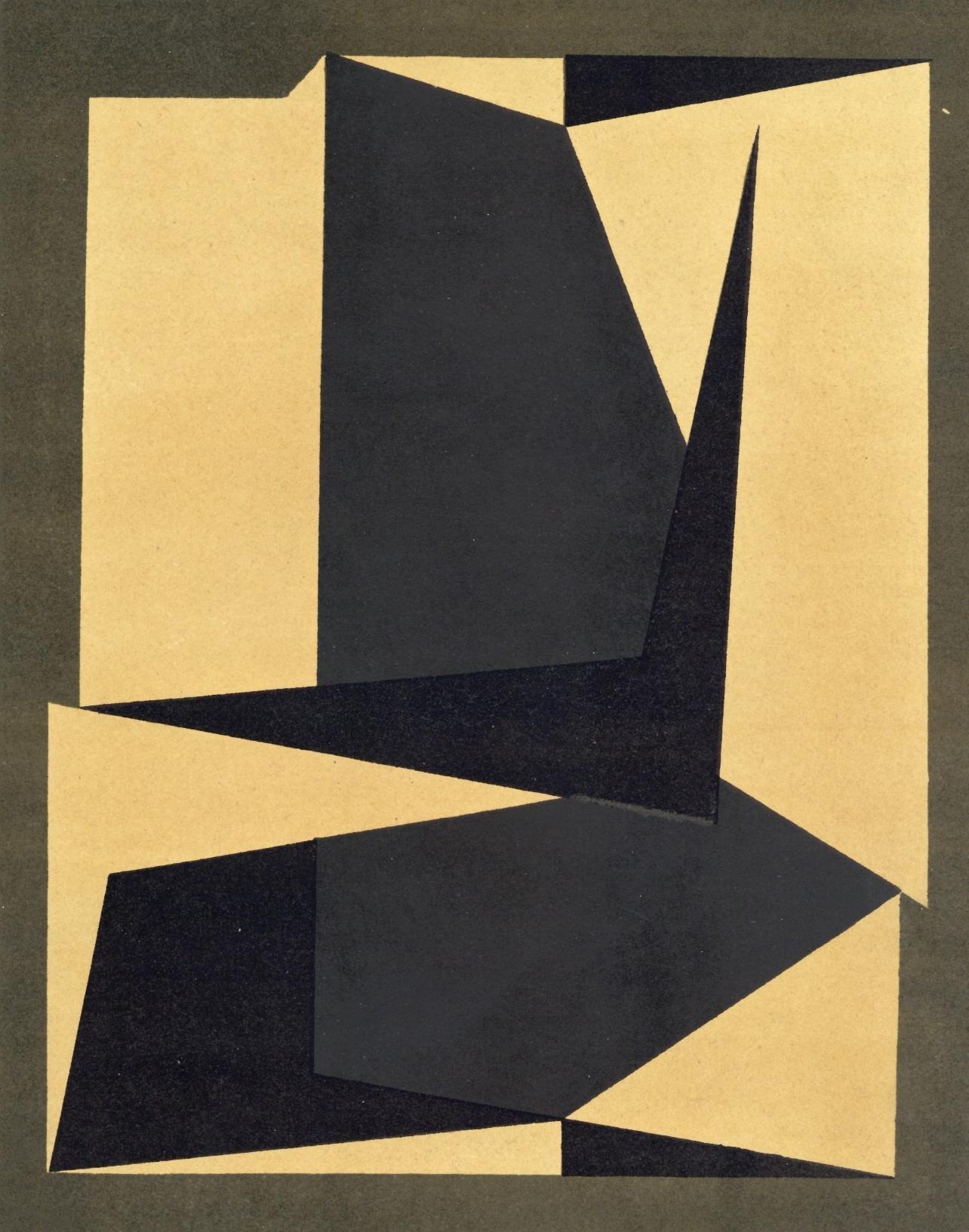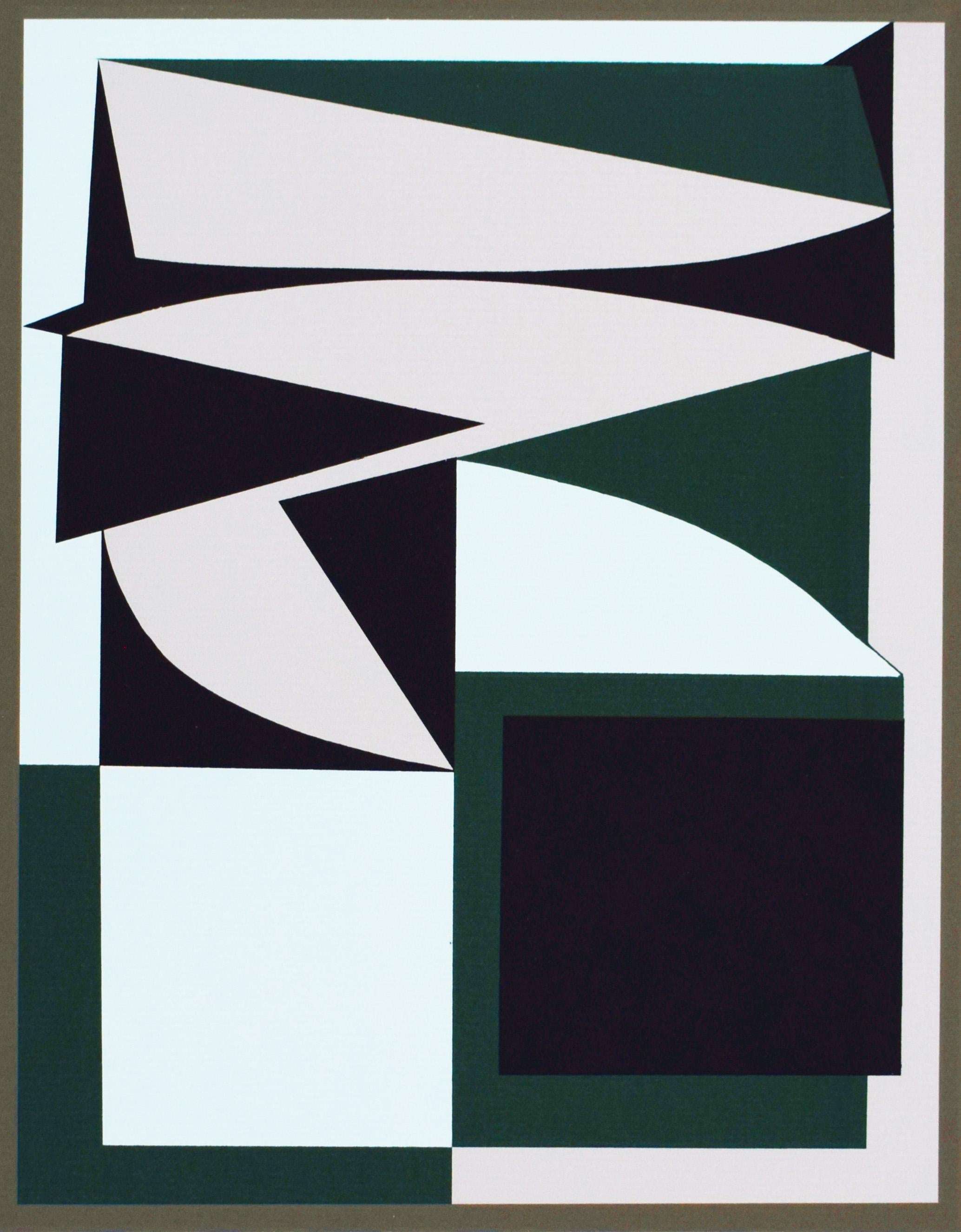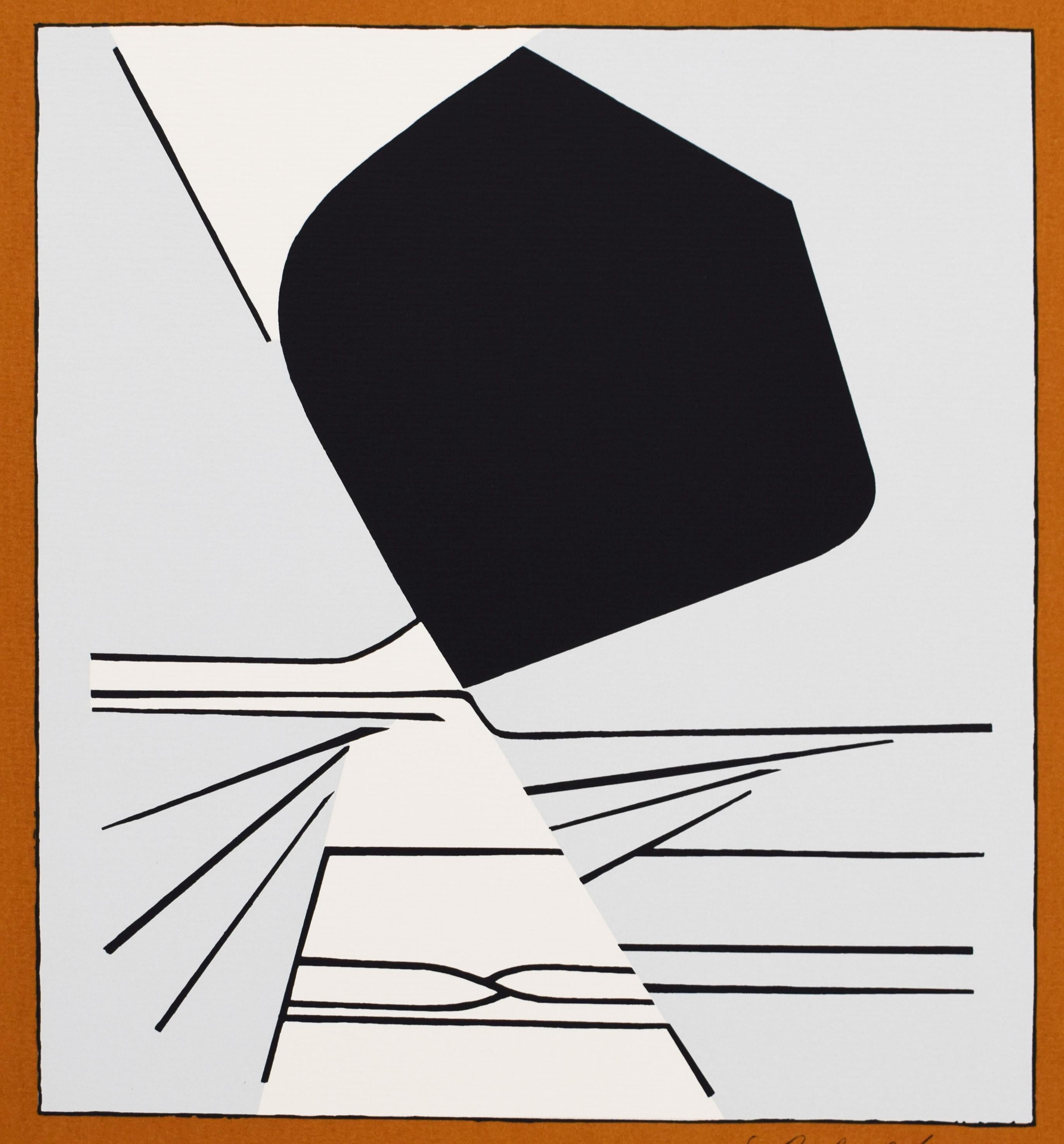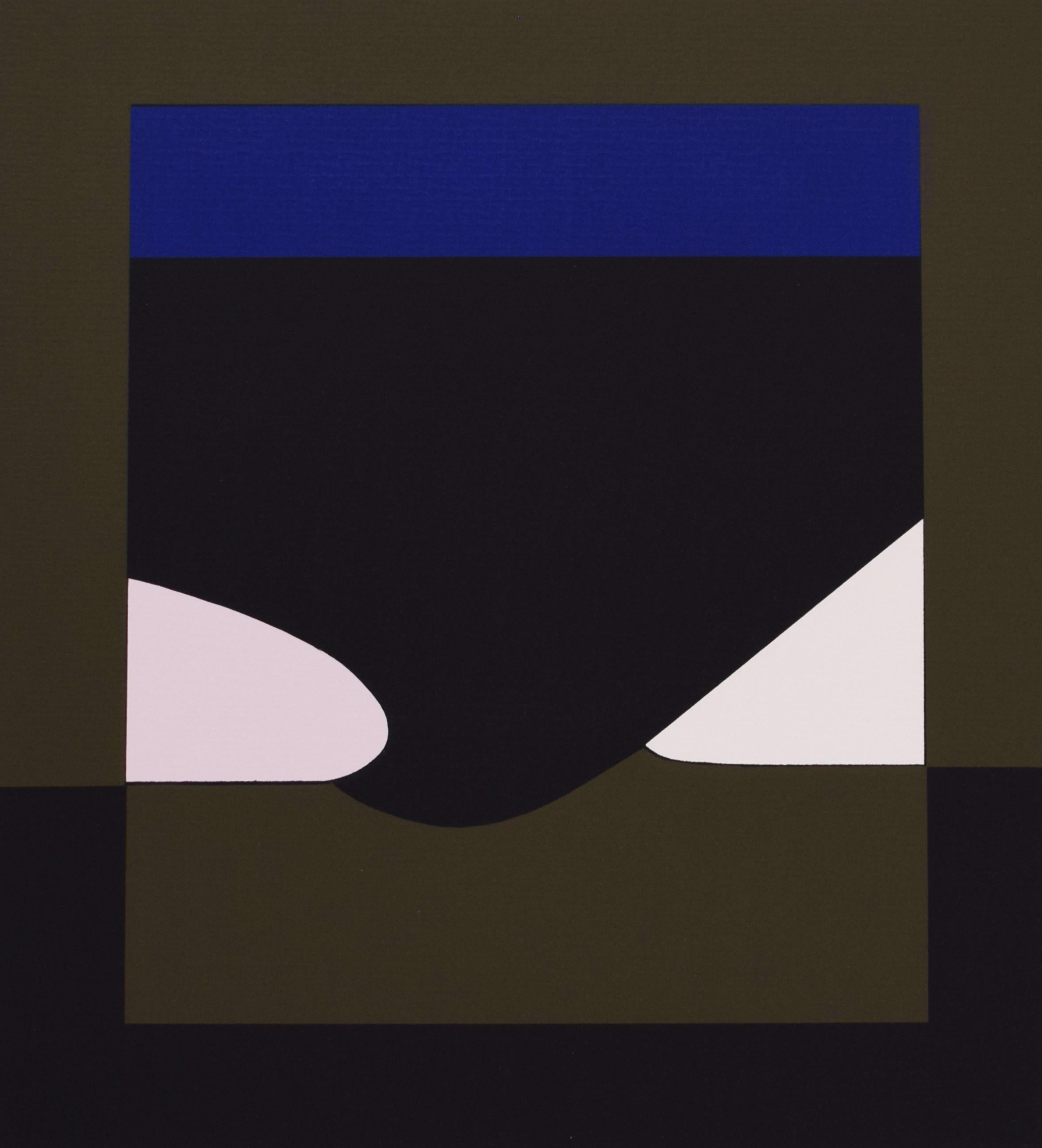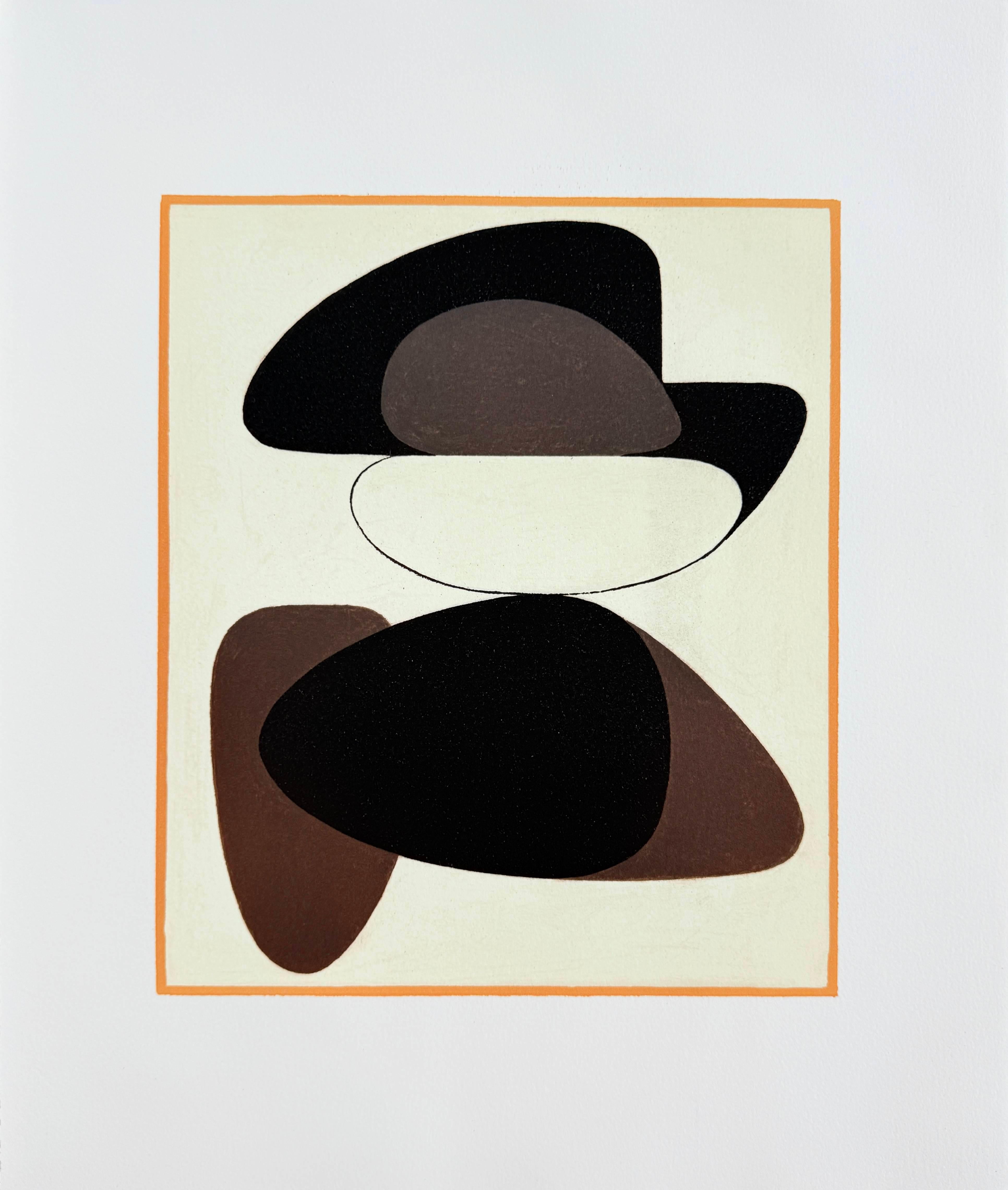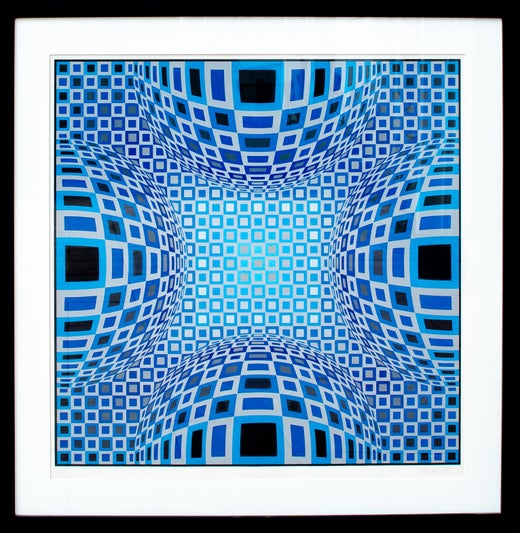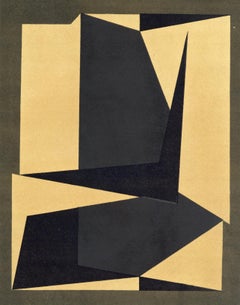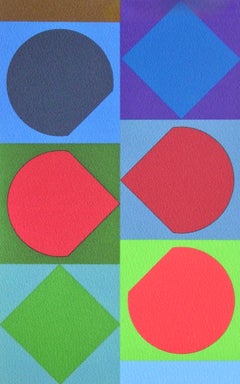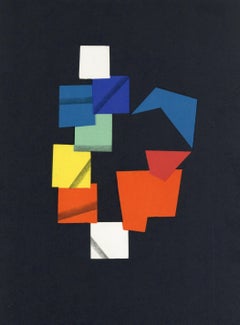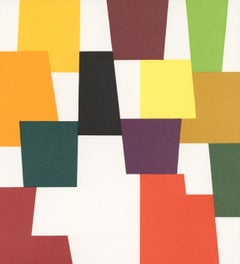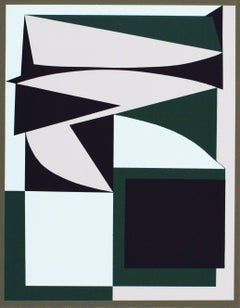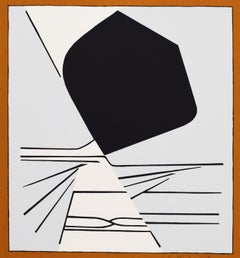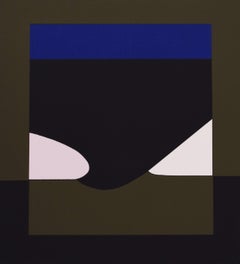This exquisite lithograph and pochoir by Victor Vasarely (1906–1997), titled Pamir (Pamir), from the album XXe Siecle, Nouvelle serie, XXe Annee, No. 10 (double), Mars 1958, originates from the 1958 edition published by Societe Internationale dArt XXe Siecle, Paris, under the direction of Gualtieri di San Lazzaro, editeur, Paris, and printed by Atelier Daniel Jacomet et Cie, Paris, 1958. Pamir exemplifies Vasarelys precision-driven exploration of optical structure during a formative period in his development toward full Op Art.
Executed as a lithograph and pochoir on velin paper, this work measures 12.5 x 9.75 inches, with centerfold and stitch perforations as issued. Unsigned and unnumbered as issued. The edition exemplifies the superb craftsmanship of Atelier Daniel Jacomet et Cie, Paris
Artwork Details:
Artist: Victor Vasarely (1906–1997)
Title: Pamir (Pamir)
Medium: Lithograph and pochoir on velin paper
Dimensions: 12.5 x 9.75 inches (31.75 x 24.77 cm)
Inscription: Unsigned and unnumbered as issued
Date: 1958
Publisher: Societe Internationale dArt XXe Siecle, Paris, under the direction of Gualtieri di San Lazzaro, editeur, Paris
Printer: Atelier Daniel Jacomet et Cie, Paris
Condition: Well preserved, consistent with age and medium
Provenance: From the album XXe Siecle, Nouvelle serie, XXe Annee, No. 10 (double), Mars 1958, published by Societe Internationale dArt XXe Siecle, Paris; printed by Atelier Daniel Jacomet et Cie, Paris, 1958
About the Publication:
Gualtieri di San Lazzaros XXe Siecle (Twentieth Century) was one of the most influential art journals of the modern era, founded in Paris in 1938 as a platform for the greatest painters, sculptors, and writers of the 20th century. San Lazzaro, a visionary editor, critic, and champion of modernism, believed that art and literature should coexist as expressions of a shared human imagination. Under his direction, XXe Siecle became a cultural bridge between Europe and the wider world, publishing special issues devoted to leading figures such as Picasso, Matisse, Chagall, Braque, Calder, Miro, Kandinsky, and Leger. Each edition combined essays by renowned critics and poets with original lithographs and woodcuts printed by the foremost ateliers of Paris, Milan, and New York, including Mourlot, Curwen, and Amilcare Pizzi, creating a uniquely rich dialogue between text and image. The 1960 issue, XXe Siecle, Nouvelle serie, No. 14, showcased Daphnis et Chloe, one of Chagalls most celebrated lithographic subjects, coinciding with his work on the monumental suite of lithographs inspired by the same pastoral tale, published by Teriade. Through this publication, San Lazzaro further cemented Chagalls reputation as the modern poet of color and love, uniting myth, nature, and emotion in visual form. Today, XXe Siecle remains an essential record of 20th century modernism, celebrated for its seamless integration of fine art, literature, and design.
About the Artist:
Victor Vasarely (1906–1997) was a Hungarian French painter, printmaker, and visionary whose groundbreaking explorations of geometry, color, and optical illusion established him as the father of Op Art and one of the most influential figures in 20th century modernism. Born in Pecs, Hungary, he began studying medicine before turning to art, enrolling at the Bauhaus inspired Muhely Academy in Budapest, where he absorbed the principles of constructivism, design, and the fusion of art with science. Moving to Paris in 1930, he immersed himself in the avant garde world of Pablo Picasso, Alexander Calder, Alberto Giacometti, Salvador Dali, Joan Miro, Wassily Kandinsky, Marcel Duchamp, and Man Ray, whose innovations in abstraction, surrealism, and spatial form deeply informed his own artistic evolution. Vasarelys early graphic works explored the interplay of structure and perception, leading him to develop a radical visual language of dynamic geometry and chromatic vibration that redefined the relationship between viewer and artwork. His iconic series including Zebra, Vega, Gestalt, and Planetary Folklore use precisely calibrated grids and shifting color patterns to create a sense of kinetic energy, illusion, and spatial depth, merging scientific rigor with visual poetry. Through this synthesis of art and mathematics, Vasarely founded the Op Art movement, influencing generations of artists such as Bridget Riley, Jesus Rafael Soto, Yaacov Agam, Carlos Cruz Diez, and Richard Anuszkiewicz, as well as countless architects and designers who incorporated his ideas into public art and modern design. A proponent of art for all, Vasarely sought to democratize beauty by integrating abstraction into daily life through architectural facades, tapestries, and monumental installations culminating in the creation of the Fondation Vasarely in Aix en Provence in 1976, a center dedicated to the unity of art, science, and technology. His art, housed in major institutions including the Museum of Modern Art in New York, the Tate Modern in London, and the Centre Pompidou in Paris, remains celebrated for its precision, intellect, and timeless vibrancy. His highest auction record was achieved by Gestalt Vega (1969), which sold for 615,000 USD at Sothebys New York on May 17, 2019, confirming Victor Vasarelys enduring legacy as one of the most visionary and influential masters of optical and geometric abstraction in modern art.
Victor Vasarely XXe Siecle 1958, Victor Vasarely pochoir, Vasarely Pamir.
